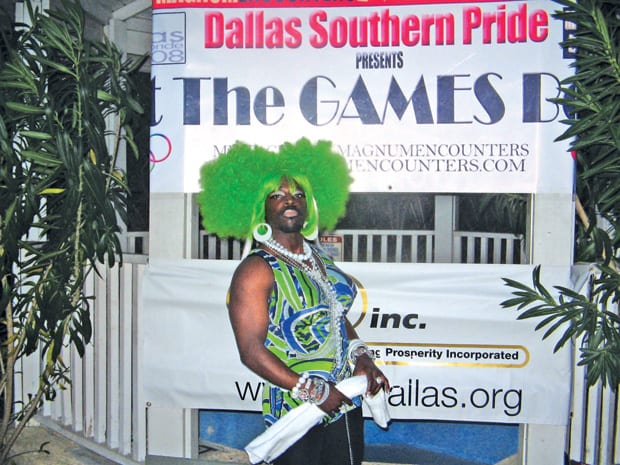Annual event in Dallas this weekend continues legacy of giving a voice to groups who’ve often been excluded from mainstream Pride celebrations

BALLS ARE BIG | The House, Ball and Pageant communities serve as an entry point for many young African-Americans who have either been put out of their homes or are looking for access to the gay community.
 A bystander shouted, “Gay power!,” someone began singing “We Shall Overcome,” and the crowd reacted with amusement and general good humor mixed with growing and intensive hostility.
A bystander shouted, “Gay power!,” someone began singing “We Shall Overcome,” and the crowd reacted with amusement and general good humor mixed with growing and intensive hostility.
This personal account, recorded by David Carter in his book Stonewall: The Riots that Sparked the Gay Revolution — offers a glimpse of the key role that the African-American civil rights movement played in igniting the events that led to gay Pride and the Gay Liberation Movement.
The first gay Pride, known then as Christopher Street Liberation Day, was held in New York City and officially celebrated the one-year anniversary of the Stonewall Rebellion.
And as the years passed, and Pride celebrations began to spread to other cities, they also began to look more and more white gay male identified — limiting and almost totally eliminating the participations of people of color and transgender individuals who along with others began the Gay Liberation Movement of the late ’60s.
It was that climate of exclusivity and other marginalizing experiences that prompted a group of black gay Los Angeles youth in the summer of 1988 to host a secret social gathering miles away from their homes to celebrate their lives among others who identified as they did: young, black and gay.
Although they were far removed from the Stonewall experience by age and location, they still were affected by the racial divide between white gays and gay people of color.
In many ways the treatment they received from the larger heterosexual black community was not much more inclusive, and public expressions of gay life could bring about violence from the black straight individuals, so hosting an event far from the public eye was very important. This gathering, now 34 years old and known as “At the Beach,” started the social movement that we refer to today as Black Pride.
Black Pride was born out of a yearning to connect with other black gay people and has grown into an event that allows people to reconnect with the legacy and contributions of artists and poor queer people of color, while examining current issues and accomplishments by our community.
Looking at the lineup of events planned for this year’s Dallas Black Pride celebration, I have feelings of joy and hope.
Our Black Pride weekend is filled with the inclusion of youth, poor/working class people and trans-identified individuals, as well as black queer legacy.
The Southern Regional Ball/House and Pageant (B/HAP) Communities’ Leadership and Health Disparities Conference hosted by Abounding Prosperity gives critical focus on the history, accomplishments and current issues facing the House, Ball and Pageant communities.
These communities are made up of mostly working-class gay, lesbian and transgender individuals — and a small contingent of straight people. They also serve as an entry point for many young people who have either been put out of their homes or are looking for access to the gay community.
Understanding how these communities have reconstructed the family structure and created their own ways of dealing with HIV/AIDS is critical to development of HIV interventions geared toward black gay men and trans women. So this important conference legitimizes the lives and work of sub-communities that have been left out of the discourse of public health until recent years.
DFW Pride Movement and HerPride offer a variety of empowerment sessions to help individuals further understand themselves and their right to be proud, while Fahari Arts Institute joins forces with Dallas Southern Pride to offer an evening of black queer artistry.
All the entities have included the most marginalized amongst the gay community: the poor, people of color, youth, artists and the trans community. And Black Pride is not shy on social gatherings. Party promoters have planned a weekend full of opportunities for black queer individuals to gather together, party and socialize. Whether at a happy hour, pool party, pageant, ball or house party, more than 10,000 black queer people will connect, touch, laugh and celebrate with one another over the weekend.
But even with all that we have accomplished, I am also mindful of the work that is still to be done and our need to revisit those initial problems and concerns surrounding the events of 1969. There is still a pressing need to expand our social justice agenda and community organizing skills.
After the Stonewall Rebellion, many organizations were formed and much work was done to fight for the rights of gay people. It is our charge in keeping with this legacy to work hard to continue to fight for our rights once Dallas Black Pride weekend is over.
Harold Steward is artistic director of Fahari Arts Institute and editor-in-chief of BlaqOut Dallas. He can be contacted at info@blaqoutdallas.com.
This article appeared in the Dallas Voice print edition October 5, 2012.

